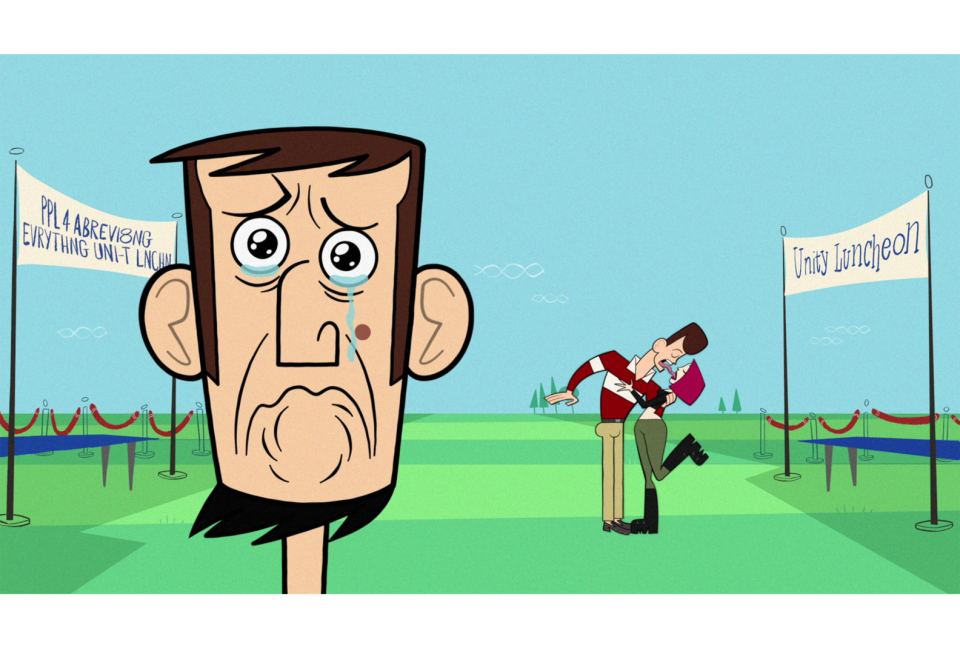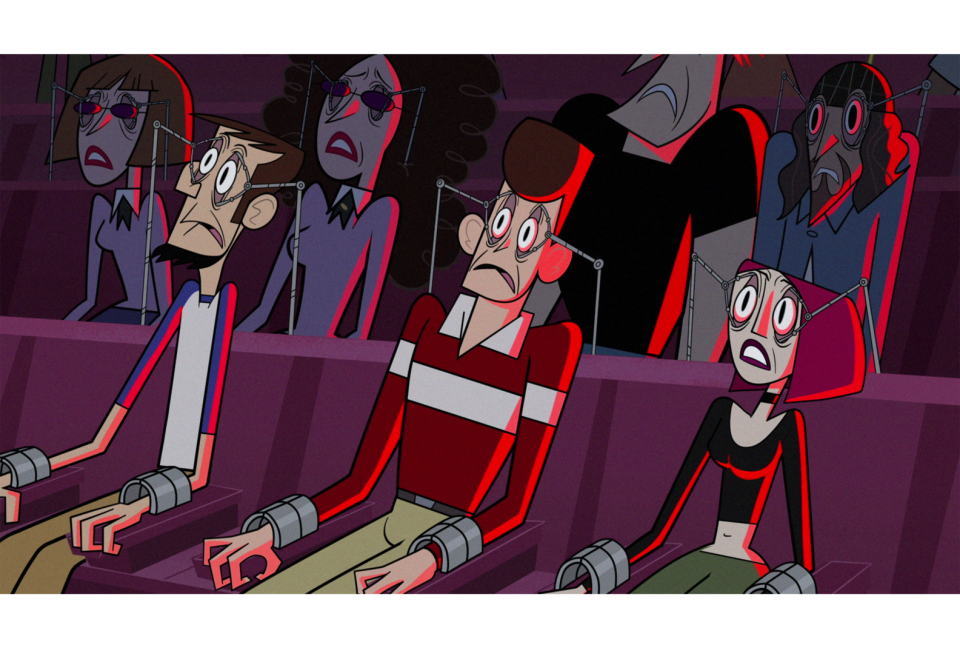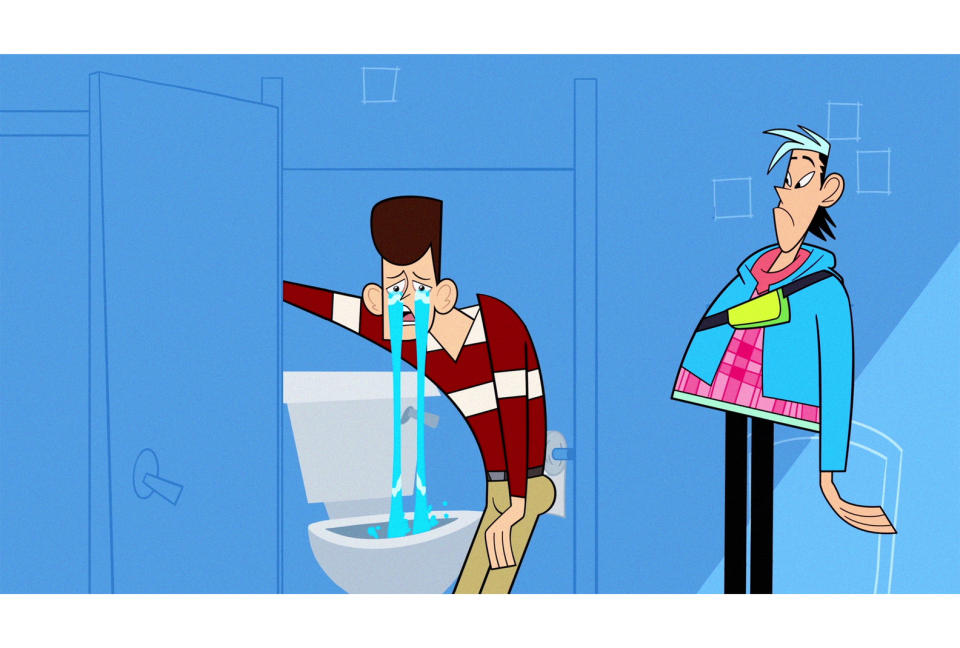Cult Fave ‘Clone High’ Returns with New Historical Legends and Timely Satire

- Oops!Something went wrong.Please try again later.
“Clone High,” the animated MTV cult classic about a high school devoted to teenage clones of historical figures from creators Phil Lord and Chris Miller (the “Spider-Verse” franchise) and Bill Lawrence (“Ted Lasso”), returns with new episodes on Max 20 years after the cancellation of its sole season. The core group has thawed to confront a more complicated world of social media and new cultural norms, where “Riverdale” has replaced “Dawson’s Creek” as the coming-of-age template, complete with slightly more adult humor and even sillier situations — and fewer executive notes since the creators now wield greater power.
Back are Abe Lincoln (Will Forte), Cleopatra (Mitra Jouhari replacing Christa Miller), JFK (Chris Miller), and Joan of Arc (Nicole Sullivan). They are joined by new clone classmates Harriet Tubman (Ayo Edebiri), Frida Kahlo (Vicci Martinez), Confucius (Kelvin Yu), Topher Bus (Neil Casey as a canceled Christopher Columbus), and Sacagawea (Jana Schmieding). However, party animal Gandhi remains on ice (no sense courting controversy again since pressure from India was a factor in the show’s cancelation). Abe and JFK have shifted their desire from Cleo to Joan, who adjusts to being with the cool crowd, while artsy Frida (the class president) and theatrical Harriet are now the most popular clones, and social media savvy, super loaded Confucius struggles to live up to his legendary status.
More from IndieWire
Erika Rivinoja (a writer from Season 1) and Erik Durbin are the new showrunners and are currently in the middle of Season 3. Both previously worked with Lord and Miller on Fox’s “The Last Man on Earth” series. The first question was how to fill in the gaps left by Gandhi. “We kind of trapped ourselves in this little love square [in Season 1],” Rivinoja told IndieWire. “All of these soapy teen shows need more characters ’cause you want to have more of these love things, and also, comedy-wise, we wanted to involve more people early on. At its core, it’s still the same kind of emotional drama you always had, but it’s kind of nice to have more to pull from: ‘Hunger Games,’ ‘Maze Runner,’ ‘Yellowjackets.’ It’s a fun little sociological experiment to see how these personality types interact with each other.”

For Rivinoja, it was fascinating to revisit and expand on a show she first worked on when she was 23 and the only woman writer. “I was Mrs. Maisel,” she said, “but it was just that sort of event how we evolved as storytellers and how our humor evolved over 20 years. The story room this time was half women. It was so diverse and really just a much different atmosphere. And it was fun to revisit those same things 20 years later. I always thought Abe was so wonderful. He was our point-of-view character. But a lot of our younger writers hated Abe. They thought he was so terrible…he’s mean to Joan.
“And it was really neat for us to watch Chris and Phil revisit this because it was their baby,” she continued. “This is what put them on the map, and then they were handing it off to us. But you could tell that they still really cared. They were involved totally along the way. Lots of notes from them. They’re part of the fabric of this show. And Bill Lawrence helped us with the story on this pilot and he weighs in occasionally. He provides fresh eyes with astute observations. He [contributed] an emotional resolution between Abe and Joan.”
Durbin, who came in during the middle of production to help adjust character arcs, was a fan of how the show pushed comedic boundaries 20 years ago. He added that Lawrence reminded them that “you have to care about the characters. I think that really hit all of us who worked in that writer’s room,” he told IndieWire. “I think it’s really informed everything.”

While Season 1 focused on Abe, Season 2 shifts to Joan’s perspective. “What happens when the outcast becomes the popular person?” Durbin said. Among the showrunners’ favorites are Episode 5 (“Some Talking Points But Mostly Songs?”), in which the students stage a musical version of the “Twister” game, Episode 7 (“Spring Broken”), which is a “Yellowjackets” riff about getting stranded in the desert, and Episode 9 (“For Your Consideration”), which explores beloved robot Mr. B’s backstory. “In the second half, we really went for it,” added Durbin. “It gets very experimental. We found our voices and our characters, and we really pushed it.”
Meanwhile, the animation team at ShadowMachine (the Oscar-winning “Guillermo del Toro’s Pinocchio” and the Emmy-winning “BoJack Horseman”) in L.A. not only maintained the angular 2D look of Season 1 (“Gerald McBoing-Boing” meets “The Powerpuff Girls”) but came up with a more rounded shape language to distinguish the new clone characters. They also were more dynamic in their camera work without appearing CG.
But they embraced a bold experimentation in Episode 9, with three distinct styles for Mr. B’s tragic journey, where he’s separated from his human family and struggles to survive before finding a home at Clone High. There’s the black-and-white ’30s look for the early domestic scenes in the South, influenced by Fleischer Studios’ “Betty Boop” cartoons, an ’80s/’90s TV style reminiscent of “Alvin & the Chipmunks,” and a ’70s expressionistic look influenced by Ralph Bakshi.

“It was a little bit of a challenge finding animation styles that had not been referenced in some way or another,” ShadowMachine’s supervising animator Anna Hollingsworth (“BoJack Horseman”) told IndieWire. “We had our overseas studio, [Canadian-based] Jam Filled, work on the back end. We sent them key poses because we wanted to make sure we had a lot of control over how it came back, and we didn’t want it to look puppeted.”
Two ShadowMachine artists tag-teamed the black-and-white sequence traditionally, applying filters for the proper retro quality; the Saturday morning cartoon look was also done traditionally by one of the in-house artists, and the background team nailed the expressive Bakshi-like animation. “I remember Phil for that just being like, dirtier, make it look dirtier. He’s really good about pushing you.
“We were very intent upon finding people who like doing this style of animation and were working in their wheelhouse,” Hollingsworth added. “So they wanted to really have that authenticity for those segments, and I think it was a fun, little experiment that turned out great.”
“Clone High” debuts with two episodes May 24 on Max, with two new episodes debuting each Thursday starting June 1 leading up to the final two episodes on June 22.
Best of IndieWire
Sign up for Indiewire's Newsletter. For the latest news, follow us on Facebook, Twitter, and Instagram.

